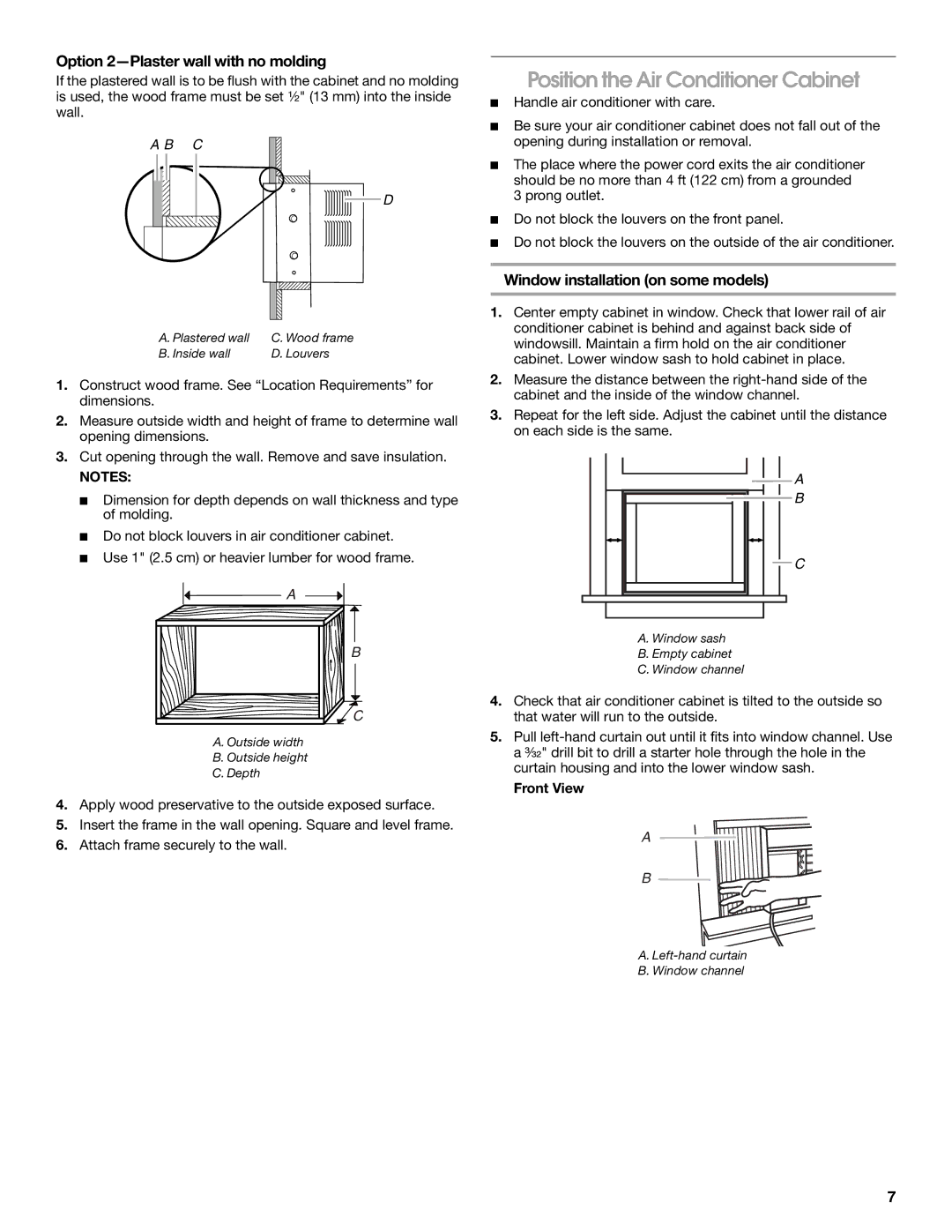
Option 2—Plaster wall with no molding
If the plastered wall is to be flush with the cabinet and no molding is used, the wood frame must be set ¹⁄₂" (13 mm) into the inside wall.
A B C
![]() D
D
Position the Air Conditioner Cabinet
■Handle air conditioner with care.
■Be sure your air conditioner cabinet does not fall out of the opening during installation or removal.
■The place where the power cord exits the air conditioner should be no more than 4 ft (122 cm) from a grounded 3 prong outlet.
■Do not block the louvers on the front panel.
■Do not block the louvers on the outside of the air conditioner.
A. Plastered wall | C. Wood frame |
B. Inside wall | D. Louvers |
1.Construct wood frame. See “Location Requirements” for dimensions.
2.Measure outside width and height of frame to determine wall opening dimensions.
3.Cut opening through the wall. Remove and save insulation.
NOTES:
■Dimension for depth depends on wall thickness and type of molding.
■Do not block louvers in air conditioner cabinet.
■Use 1" (2.5 cm) or heavier lumber for wood frame.
![]()
![]() A
A
B |
C |
A. Outside width
B. Outside height
C.Depth
4.Apply wood preservative to the outside exposed surface.
5.Insert the frame in the wall opening. Square and level frame.
6.Attach frame securely to the wall.
Window installation (on some models)
1.Center empty cabinet in window. Check that lower rail of air conditioner cabinet is behind and against back side of windowsill. Maintain a firm hold on the air conditioner cabinet. Lower window sash to hold cabinet in place.
2.Measure the distance between the
3.Repeat for the left side. Adjust the cabinet until the distance on each side is the same.
A |
B |
C |
A. Window sash
B. Empty cabinet
C. Window channel
4.Check that air conditioner cabinet is tilted to the outside so that water will run to the outside.
5.Pull
Front View
A
B
A.
B.Window channel
7
